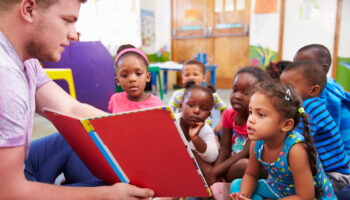Erin DelRegno
“How much good inside a day? Depends on how good you live ‘em. How much love inside a friend? Depends how much you give ‘em.”
– Shel Silverstein, A Light in the Attic
When I was in elementary school, I absolutely loved to read. I only owned a few books at home that I reread multiple times, so looking at books during our reading time in the school library was my opportunity to be able to choose other books and read more. I’m sure I read a variety of books, but the ones I remember taking to read on multiple occasions were the Shel Silverstein poem books; more specifically Where the Sidewalk Ends and A light in the Attic. I don’t know what it was that I loved so much…. the lighthearted drawings, the creative rhymes, the humor. One thing I remember was how the descriptive rhymes and vivid images would spark my imagination; I would picture each line in my head as I read.
All I know is that when I read them now, they take me right back to how much I loved them then. As a child, I focused more on the funny topics he wrote about and the silly illustrations. While there are poems in his books that are just for fun, as I read them now, there are true meanings behind some of his poems. They are relatable, insightful, and there are lessons we can learn from them. They make you smile and think at the same time.
Sheldon “Shel” Silverstein was born on September 25th and as I researched and learned more about him, I was surprised by many of the things I read. He never planned to write or draw for kids! He also wrote songs and won a Grammy for one performed by Johnny Cash. Although, like me, there may be much you do not know about him, you may be familiar with his books from when you were a child. While he has passed away, his whimsical writing lives on and his poems can be read and used with the children you work with.
Here are some activity ideas you can do based on some of his poems and stories:
- Introduce the children to poetry and rhyme. Create your own group poem. Let the children make their own lines by using their ideas, characters, and thinking of rhyming words. Then, after it is written, let them draw their own pictures of the poem.
- Read one of Shel Silverstein’s poems to the children. Let the children draw a picture based on what you read. After they are completed, you can look at their drawings and see how they differ from the picture he drew in the book.
- The Giving Tree:
- There are so many activities you can do with this classic children’s book. Have the children brainstorm what they could give to others or how they can show kindness. Then, you can add to this by creating and displaying a bare tree in your classroom. When you catch a child or adult being kind to others in the classroom, write what they did on a heart and add it to the tree. You can discuss wants vs. needs with children. Take a nature walk and look at actual trees; do they grow any fruit, do they provide shade, can you count the rings to see how old they are, etc.? Taste different color apples or make applesauce with them. Here is a link for some additional ideas to use with this story. Teaching “The Giving Tree” to Preschool Students
- Where the Sidewalk Ends and A light in the Attic Poems:
- Shadow Race – Use the outside if it is a sunny day or you can use a flashlight and dim light. Have children stand facing the sun/light as it says in the Shadow Race poem. They will see that their shadow is in front of them in one spot and behind them in another. You can also see if the size of the shadow changes as they move closer of farther away from the sun/light.
- Signals – What preschool group doesn’t play red light green light? With this poem, you can expand on this game and encourage children to include their own ideas. Of course, you stop when the light turns red, but what do you do when it turns purple with blue stripes? Have children think of actions they will do when that is the color you hold up. Use a variety of colors and patterns and give each one an action. This game will challenge the children and will be so much fun as I’m sure they won’t be able to remember each action.
- Here is a link to some additional math activities that can be done to poems in these books as well. Math activities you can do with Shel Silverstein poetry
- Falling Up Poems:
- Noise Day – Now while you may not encourage the children to make any noise they can, this poem gives you an opportunity to focus on different sounds. Experiment with some of the materials and sounds listed in this poem (yodel, bang a spoon, kick a can). Discuss with the children the differences in sounds. Which sounds were louder/softer, which made a high pitch/low pitch, etc.? You can also look at which sounds are made with an object vs. ones that are made with their bodies. If you do that activity, you can also use another poem from Where the Sidewalk Ends; Ourchestra.
- A closet full of shoes – Maybe not a closet but you can bring in a bag full of different types of shoes. The children can find and match the pairs of shoes. You can then also discuss the similarities and differences in how they look and what the different shoes are used for (baseball spikes, flippers, tap shoes, etc.).
The following resources provide additional information about Shel Silverstein, lists all his books, videos of some of the poems, and additional learning resources:




